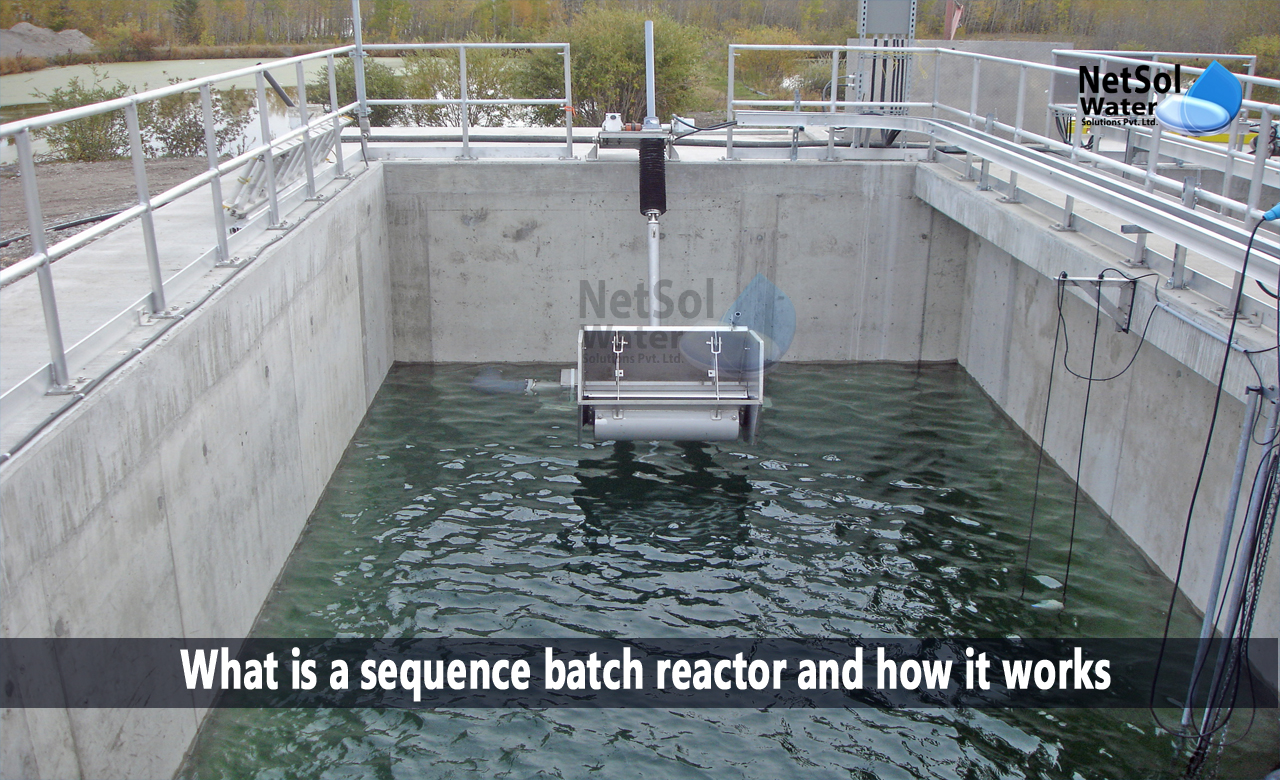What is a sequence batch reactor and how it works?
Industrial wastewater treatment tanks are known as sequential batch reactors (SBR) or sequencing batch reactors. Batch processing of wastewater from anaerobic digesters or mechanical biological treatment facilities is done in SBR reactors. Wastewater is bubbled with oxygen to reduce its biochemical and chemical oxygen demands, allowing it to be disposed of in sewers or applied to land. SBRs can take many different forms, but the fundamental process never changes and we will discuss What is a sequence batch reactor (SBR) and how it works?
The system comprises at least two identically equipped tanks that share an interchangeable intake. The tanks are designed with a “flow-through” mechanism that enables untreated wastewater to enter one end and treated water to exit the other.
The other tank is aerating and filling while the first is settling and decanting. The tank’s bio-selector is a component that is situated close to the intake. This is composed of a series of baffles or barriers that direct the flow under and over one baffle to the next, or from one side of the tank to the other. This helps to mix the influent coming in and the activated sludge coming back out, starting the biological digestion process before the liquor hits the main tank.
How does sequencing batch reactor (SBR) work?
Within the therapeutic process, there have been five stages:
- Fill
- React
- Settle
- Decant
- Idle
The input valve opens first, allowing the container to be fed, then physical mixing takes place without the addition of air. The anoxic stage is another name for this. The combined liquor is aerated using physical pumps that are fixed or float or by air movement through fine bubble diffusers that are positioned at the bottom of the tank in the second stage. In the third stage, there is neither aeration nor stirring, and the settling of suspended particles starts. The fourth stage involves opening the outlet valve to let the “pure” supernatant liquor leave the tank.
Configuration of the SBR Process
SBRs must have the following components:
- reactor basin
- The mechanism for removing waste sludge
- equipment for aeration
- decanter for effluent
System of process control
To enable the continuous input of wastewater, the SBR system typically consists of a storage/equalization tank, one SBR tank, or at least two tanks. As with conventional activated sludge treatment systems, conventional screening and grit removal are typically used as preliminary treatments. In most cases, SBR systems do not need a first sedimentation stage unless the influent suspended particle concentration is quite high.
Settled sewage can also be treated if the SBR is positioned downstream of the current primary settlement tanks. Reactors are typically simple steel or concrete tanks that are round, square, or rectangular in shape. Both lagoon projects and already-built tanks, including primary sedimentation tanks, can be used. The treatment plant as a whole requires fewer buildings, enabling a more compact site layout because the tank serves as both an aeration tank and a final clarifier.
Multi-sequencing batch reactor transformation
The owner may decide to change their current method into a multi-SBR facility when a typical treatment plant is unable to provide enough treatment due to increasing loading rates, stricter treatment standards, and other issues. The need for SBR sludge management will decline as a result of the conversion to SBR because the sewage age will be prolonged.
Advantages of SBR
- It uses aeration intensity modulation to achieve concurrent (co-current) nitrification and de-nitrification.
- It runs on simple cycle changes and continuously decreasing loads.
- It prevents filamentous sludge bulking while also ensuring endogenous respiratory rate (expulsion among all available substrates), nitrification, and de-nitrification, as well as improved biological phosphorus withdrawal. It does this by using feed-starve selectivity, So/Xo operation (regulation of the restricting substrate to microorganism proportion), and aeration intensity.
- It can withstand shock loads brought on by changes in hydraulic and organic load. The approach is simple to put into practice and may be altered to take into account both short-term diurnal and long-term climatic fluctuations.
- It does away with the requirement for an additional clarifier.
- It eliminates the need for separate load balancing. With a much lower solids flow than a typical clarifier design, the SBR basin serves as both an equalization basin and a clarifier.
- It may naturally eliminate nutrients without the use of chemicals by regulating the supply and demand for oxygen;
- Via nutrient elimination mechanisms, it maximizes energy. The oxygen rate and energy requirements are significantly reduced by the carbonaceous BOD in feed water employed in denitrification and better biological phosphorus removal.
- It’s operating and capital costs are lower.
To contact Netsol Water, call on +91 9650608473 or send an email to enquiry@netsolwater.com

